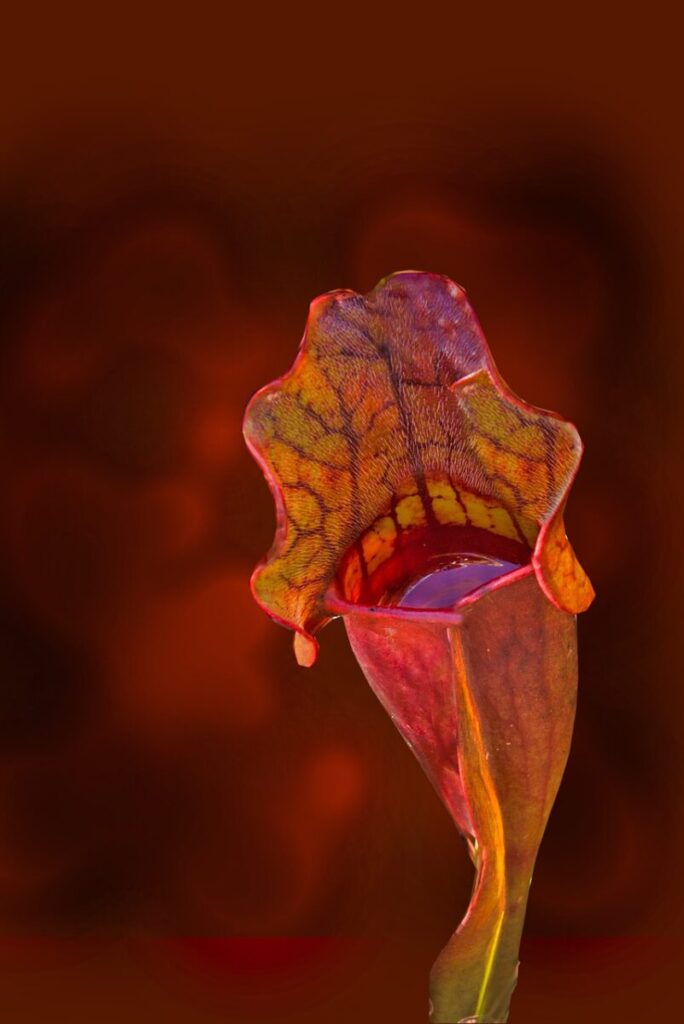Looking for a challenging and unique plant to spruce up your garden? Why not check out some pitcher plants?
What Are Pitcher Plants?
Pitcher plants are unusual plants that grow in odd pitcher-like forms. These carnivorous plants are not only eye-catching but straight-up fascinating. The plants function as traps for insects, luring them in by their smell and color.
The inside walls of the pitcher are slippery and covered in downward pointing hairs, meaning that, once trapped, insects will struggle to get out. Some plants even produce a chemical that kills insects.
These herbaceous perennials come in a variety of types; so, no matter where you live, there is bound to be one that will grow in your space.
Purple Pitcher Plant
Also known as Sarracenia purpurea, these plants are known for the deep red flowers that grow from them. The purple pitcher plants can grow up to 20 inches tall when flowering and are known to be native to both eastern and north-central North America.

These plants are known to do best in water gardens in USDA growing zones 3 to 6. Make sure to place these plants in an area that receives full sun with boggy and acidic soil.
Sun Pitcher Plant
For those looking to embrace a challenge, look no further. The sun pitcher plant is known to be among the most difficult pitcher plants to grow.
For successful growth, make sure to keep the temperature and humidity levels surrounding the plants just right. Additionally, the plants should be grown within a container in sphagnum moss and placed in areas that receive full sun to partial shade.
White Trumpet Pitcher Plant
One of the more popular pitcher plants available is the white trumpet pitcher plant. This attractive plant is native to the American Southeast and is known to be far easier to grow than other pitcher plants.
These plants are noted for the striking dark veins that stand boldly against the bright white background of the plant. Even though they’re grown for their striking pitchers, the addition of the red flowers they produce is a great bonus.
To successfully grow these pitcher plants, make sure to place them in boggy, acidic soil in a location where they will receive full sun.
There you have it. Three unique plants that can bring a challenge to even more experienced gardeners!
Senior Security Alliance posts about gardening tips, tricks, and information once a week. Be sure to follow us on Facebook and Twitter to stay tuned!
